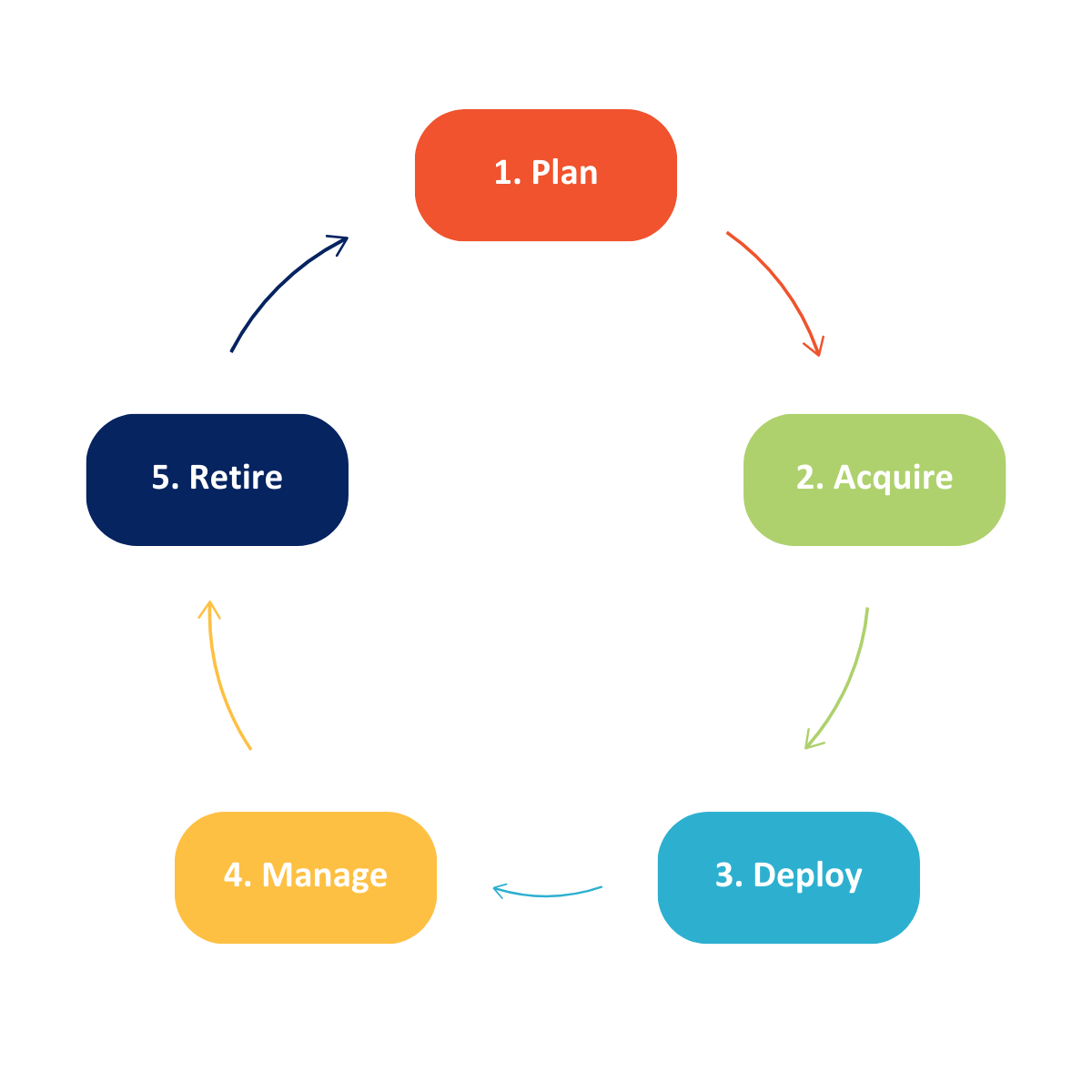In today’s connected world, organizations have become so dependent on technology that it is essential to manage IT assets using an approach like ITAM to ensure smooth operations.

IT assets—such as laptops, firewalls, switches, access points, support contracts, servers, etc.—have a finite length of life. IT Asset Management (ITAM) helps you get the most out of these assets before they become obsolete or fail.
Proper IT asset lifecycle planning helps organizations avoid:
- Unexpected downtime
- Security breaches
- Costly, last-minute purchasing decisions
- Risk
- Technology performance
What is IT Asset Management (ITAM)?
An organization’s IT assets include hardware, software and support.
ITAM follows the IT lifecycle and includes the planning, acquisition, deployment, management and disposal of technology products. The goal of ITAM is to ensure that all technology products in your organization are tracked, managed and upgraded to optimize productivity and minimize risk.
The Five Stages of ITAM:
1. Planning
This first stage involves researching the best solutions based on your organization’s needs. It’s important to research and explore various options, as IT assets typically require significant upfront investment and ongoing investment over the life of the asset.
2. Acquisition
Once you have determined which technology assets best suits your needs, it’s time to acquire them. Here you need to consider your company’s budget and long-term financial outlook. Consult a trusted partner to ensure you are getting the most value for your new assets.
3. Deployment
Once your technology is delivered, your IT team (or partner) will install and configure the devices for use.

4. Management
After IT assets are deployed, they enter the management stage. This is where you maintain and monitor the assets to ensure they are used properly and remain in good working condition. Regular updates and security patches are essential to keeping assets in good working condition.
IT partners, like WIN, can give you real-time access to the performance and maintenance data you need to ensure your equipment remains in the best possible condition throughout the entire asset lifecycle.
5. Disposal
Eventually, you will determine the long-term value of the asset no longer justifies the cost of maintaining it. At this point, the asset has entered its final stage: disposal.
A knowledgeable IT partner can provide data-driven recommendations to help you determine exactly when it makes financial sense to retire your technology.
Benefits of IT Asset Management:
An important aspect of ITAM is implementing a process across all lifecycle stages to optimize their total cost of ownership.
Specific lifecycle management benefits include:
- Minimize Downtime by replacing aging IT infrastructure before it fails
- Avoid Delays caused by underperforming software and hardware
- Make Informed Purchases and avoid reactive purchases during a crisis
- Understand True Cost of Ownership including ongoing maintenance and repairs
- Enhance Security by preventing security failures that result from outdated systems
When is the right time to implement IT Asset Management?
ITAM can be implemented at any time, but starting early allows you to design a strategic deployment plan that can have long-term financial benefits. Proactive ITAM not only helps avoid costly surprises but also sets your business up for a smoother, more secure future.
Have questions or want to learn more?
There’s more to ITAM than we can cover here. WIN Technology has strong partnerships with our IT hardware vendors giving us priority access and advantageous pricing. To learn more, talk to a WIN Specialist today.
